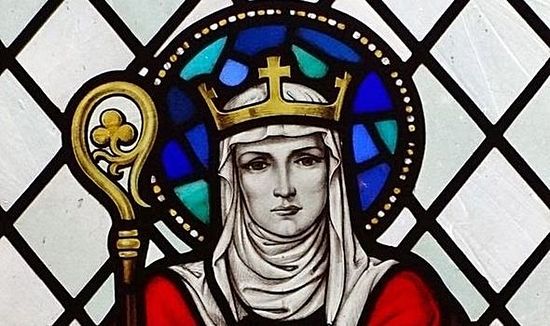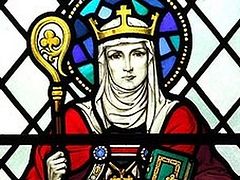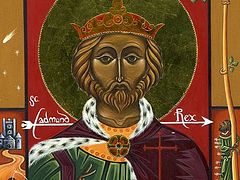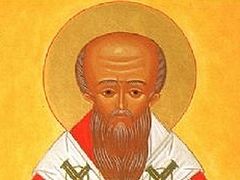Source: Express
March 10, 2020
Human remains held at a church in Kent have been confirmed as those of one of the earliest English saints in a "stunning result of national importance".
 St Eanswythe is often depicted as a crowned abbess (Image: Handout)
St Eanswythe is often depicted as a crowned abbess (Image: Handout)
Bones dating back to around the seventh century are almost certainly those of St Eanswythe, a Kentish saint and who was the daughter and granddaughter of Anglo-Saxon kings. The relics survived the upheavals of the Reformation, hidden in a church wall, and were discovered in 1885.
The patron saint of Folkestone, the princess is believed to have founded one of the first convents in England, most likely around AD660 in the original town centre.
She is thought to have died in her late teens or early 20s and the abbey either fell into the sea or was ransacked by Vikings.
Now more than 1,300 years after her death, local archaeologists and historians, working with Queen’s University in Belfast, have confirmed that human remains kept in the town’s Church of St Mary and St Eanswythe are almost certainly those of the saint.
...Read the rest at Express.



